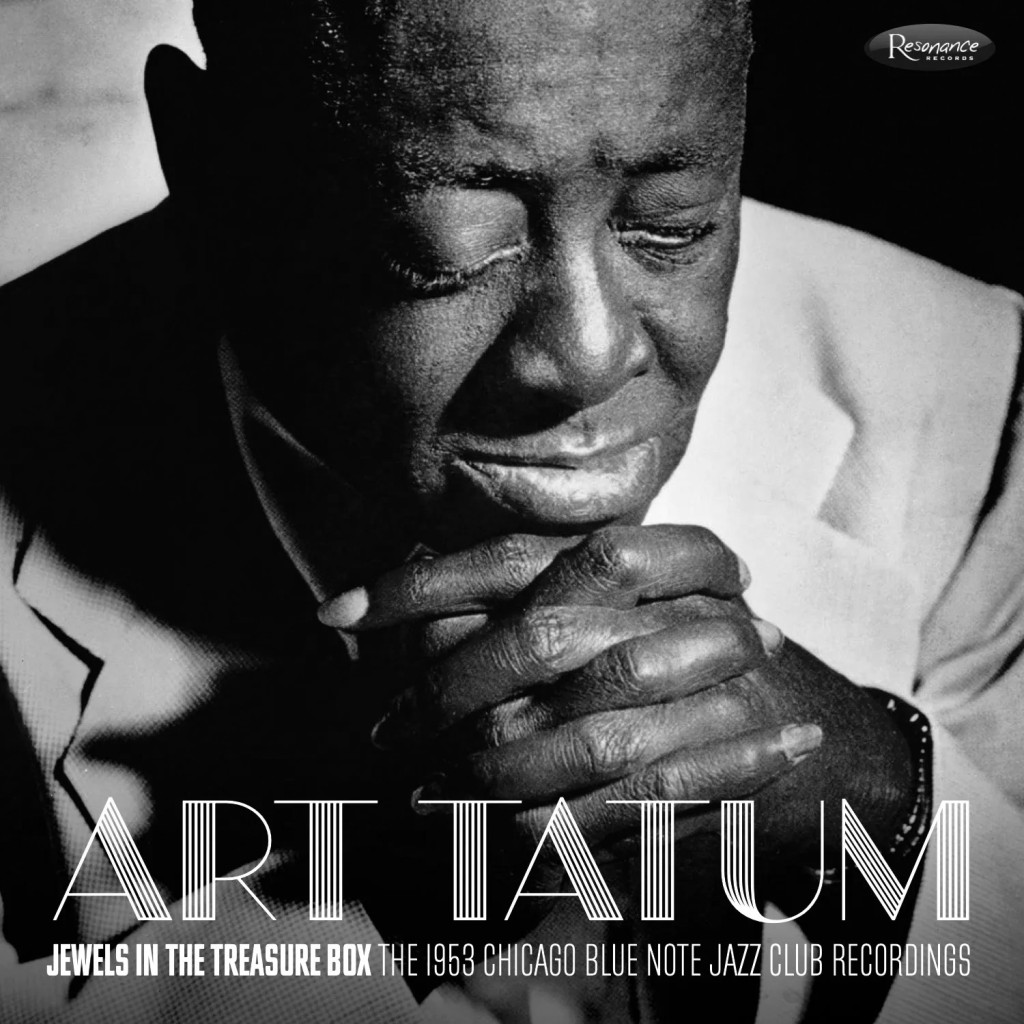 If a poll were taken of jazz pianists, other instrumentalists, critics, and knowledgeable fans that asked who was the most remarkable jazz musician of all time, Louis Armstrong, Charlie Parker and John Coltrane would be near the top, but I would be willing to wager that Art Tatum would win.
If a poll were taken of jazz pianists, other instrumentalists, critics, and knowledgeable fans that asked who was the most remarkable jazz musician of all time, Louis Armstrong, Charlie Parker and John Coltrane would be near the top, but I would be willing to wager that Art Tatum would win.
There is really no explanation for the musical genius of Art Tatum (1909-56). Born in Toledo, Ohio and nearly completely blind by the age of four (he could see a little bit in one eye), Tatum was originally self-taught on the piano before attending the classical-oriented Toledo School Of Music. He had his own radio show starting in 1927 and amazed visiting musicians and listeners but was reluctant to move to New York. Finally in 1932 he joined singer Adelaide Hall as one of her two pianists, making his recording debut with her. His first recording session as an unaccompanied pianist (Mar. 21, 1933) resulted in four songs including a rather incredible version of “Tiger Rag.” Years later when pianist Hank Jones first heard the record, he wanted to know who, in addition to Tatum, the other two pianists were.
Art Tatum had technique that topped most classical pianists, and he was always able to improvise lightning-fast runs that must have been made his hands look like a blur when seen live. Beyond the technique, he was so harmonically advanced that, 40 years later, pianists were still trying to figure out some of his chord voicings. Tatum was most inspired by Fats Waller and Earl Hines. Despite the futuristic nature of some of his playing, even during his wildest solos, the melody was not far away. Tatum was such an overwhelming pianist that it was said that other musicians had difficulties playing with him, but there were plenty of exceptions throughout his career. Other musicians just had to accept the fact that Tatum was from another musical world.
There have been few new recordings unearthed from Art Tatum’s career during the past couple of decades but producer Zev Feldman has compiled a dazzling three-CD set, Jewels In The Treasure Box, that features Tatum in 1953 leading his trio with guitarist Everett Barksdale and bassist Slam Stewart. Tatum was normally heard as an unaccompanied soloist but he had had success with a trio that included Stewart and guitarist Tiny Grimes during 1943-44. The group with Barksdale lasted from1951 until Tatum’s passing five years later but was not documented all that much other than a studio session for Capitol (Dec. 20, 1952) and some broadcasts.
The previously unreleased performances on Jewels In The Treasure Box were performed live at the Blue Note club in Chicago on Aug. 16, 21, and 28, 1953. The 39 selections, which are well recorded, feature some of the most brilliant and stunning Tatum performances that exist. Unlike his marathon solo sessions for Norman Granz later in the year which are fairly routine, Tatum sounds full of energy and enthusiasm during the Blue Note sets. Barksdale is inspired to play some of his best recorded guitar solos and Stewart (doing his trademark humming along with his bowed bass) has plenty of good spots. But even during their solos, Tatum’s “accompaniment” is dominant.
All it takes is one listen to his versions of such songs as “Indiana,” “On The Sunny Side Of The Street,” “Flying Home,” “Crazy Rhythm,” and “St. Louis Blues,” and listeners will have to admit that Art Tatum could not (and still cannot) be topped.
As is usual with Zev Feldman productions, an informative booklet (48 pages) is included that, in addition to well-written liner notes (this time by Brent Hayes Edwards), contains short interviews with the late Ahmad Jamal, Sonny Rollins, pianist ELEW, Spike Wilner, Johnny O’Neal, Monty Alexander, Michael Weiss, and Terry Gibbs about the wondrous Art Tatum.
Art Tatum • Jewels In The Treasure Box
Resonance HCD-2064
www.resonancerecords.org
Since 1975 Scott Yanow has been a regular reviewer of albums in many jazz styles. He has written for many jazz and arts magazines, including JazzTimes, Jazziz, Down Beat, Cadence, CODA, and the Los Angeles Jazz Scene, and was the jazz editor for Record Review. He has written an in-depth biography on Dizzy Gillespie for AllMusic.com. He has authored 11 books on jazz, over 900 liner notes for CDs and over 20,000 reviews of jazz recordings.
Yanow was a contributor to and co-editor of the third edition of the All Music Guide to Jazz. He continues to write for Downbeat, Jazziz, the Los Angeles Jazz Scene, the Jazz Rag, the New York City Jazz Record and other publications.






















